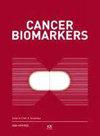Subgroup identification of targeted therapy effects on biomarker for time to event data
IF 2.2
4区 医学
Q3 ONCOLOGY
引用次数: 0
Abstract
BACKGROUND: The initiation biomarker-driven trials have revolutionized oncology drug development by challenging the traditional phased approach and introducing basket studies. Notable successes in non-small cell lung cancer (NSCLC) with ALK, ALK/ROS1, and EGFR inhibitors have prompted the need to expand this approach to other cancer sites. OBJECTIVES: This study explores the use of dose response modeling and time-to-event algorithms on the biomarker molecular targeted agent (MTA). By simulating subgroup identification in MTA-related time-to-event data, the study aims to develop statistical methodology supporting biomarker-driven trials in oncology. METHODS: A total of n patients are selected assigned for different doses. A dataset is prepared to mimic the situation on Subgroup Identification of MTA for time to event data analysis. The response is measured through MTA. The MTA value is also measured through ROC. The Markov Chain Monte Carlo (MCMC) techniques are prepared to perform the proposed algorithm. The analysis is carried out with a simulation study. The subset selection is performed through the Threshold Limit Value (TLV) by the Bayesian approach. RESULTS: The MTA is observed with range 12–16. It is expected that there is a marginal level shift of the MTA from pre to post-treatment. The Cox time-varying model can be adopted further as causal-effect relation to establishing the MTA on prolonging the survival duration. The proposed work in the statistical methodology to support the biomarker-driven trial for oncology research. CONCLUSION: This study extends the application of biomarker-driven trials beyond NSCLC, opening possibilities for implementation in other cancer sites. By demonstrating the feasibility and efficacy of utilizing MTA as a biomarker, the research lays the foundation for refining and validating biomarker use in clinical trials. These advancements aim to enhance the precision and effectiveness of cancer treatments, ultimately benefiting patients.亚组鉴定靶向治疗对生物标志物的时间到事件数据的影响
背景:启动生物标志物驱动的试验通过挑战传统的分阶段方法和引入篮子研究,彻底改变了肿瘤药物的开发。ALK、ALK/ROS1和EGFR抑制剂在非小细胞肺癌(NSCLC)中的显著成功提示需要将这种方法扩展到其他癌症部位。目的:本研究探讨了生物标志物分子靶向药物(MTA)的剂量反应建模和时间-事件算法的应用。通过模拟mta相关事件时间数据中的亚组识别,该研究旨在开发支持肿瘤生物标志物驱动试验的统计方法。方法:共选择n例患者,分配不同剂量。准备了一个数据集来模拟MTA的子组识别情况,用于时间到事件数据分析。响应是通过MTA测量的。MTA值也通过ROC测量。马尔可夫链蒙特卡罗(MCMC)技术准备执行所提出的算法。通过仿真研究进行了分析。贝叶斯方法通过阈值限制值(TLV)进行子集选择。结果:MTA在12-16范围内。预计MTA从治疗前到治疗后会有一个边际水平的变化。可进一步采用Cox时变模型作为建立MTA对延长生存期的因果关系。建议在统计方法上的工作,以支持生物标志物驱动的肿瘤研究试验。结论:该研究将生物标志物驱动试验的应用扩展到非小细胞肺癌之外,为在其他癌症部位实施提供了可能性。通过论证MTA作为生物标志物的可行性和有效性,为完善和验证生物标志物在临床试验中的应用奠定了基础。这些进步旨在提高癌症治疗的准确性和有效性,最终使患者受益。
本文章由计算机程序翻译,如有差异,请以英文原文为准。
求助全文
约1分钟内获得全文
求助全文
来源期刊

Cancer Biomarkers
ONCOLOGY-
CiteScore
5.20
自引率
3.20%
发文量
195
审稿时长
3 months
期刊介绍:
Concentrating on molecular biomarkers in cancer research, Cancer Biomarkers publishes original research findings (and reviews solicited by the editor) on the subject of the identification of markers associated with the disease processes whether or not they are an integral part of the pathological lesion.
The disease markers may include, but are not limited to, genomic, epigenomic, proteomics, cellular and morphologic, and genetic factors predisposing to the disease or indicating the occurrence of the disease. Manuscripts on these factors or biomarkers, either in altered forms, abnormal concentrations or with abnormal tissue distribution leading to disease causation will be accepted.
 求助内容:
求助内容: 应助结果提醒方式:
应助结果提醒方式:


